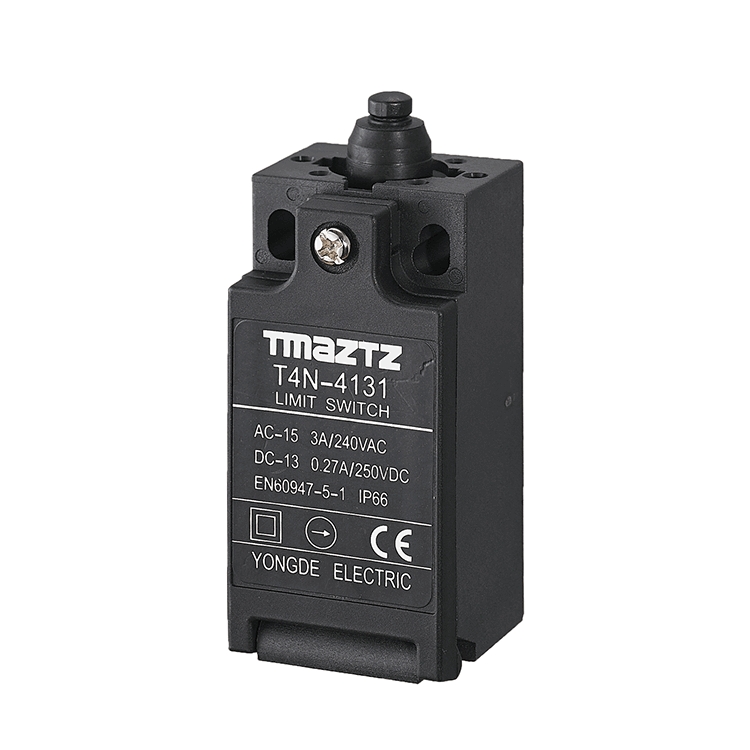What are the different types of small limit switches?
Limit switches are widely used in various industries and applications to detect the presence or absence of an object and provide a signal to control systems. These switches are crucial in ensuring accurate and reliable operation, especially in automated processes. When it comes to small limit switches, there are several different types available, each with its own unique features and applications. In this article, we will explore the various types of small limit switches, their characteristics, and their common applications.
Basic/Standard Limit Switches:
Basic or standard limit switches are the most common type of limit switches. They consist of a mechanical lever or plunger that is actuated by the presence or absence of an object. These switches are typically compact and provide a simple on/off signal. They are widely used in various applications, including machine tools, conveyor systems, and industrial equipment.
Miniature Limit Switches:
Miniature limit switches are smaller in size compared to standard limit switches. They are designed to fit into tight spaces or applications where size constraints exist. Despite their small size, they offer similar functionality to standard limit switches. Miniature limit switches are commonly used in robotics, medical devices, and electronic equipment.
Heavy-Duty Limit Switches:
Heavy-duty limit switches are built to withstand demanding environments and applications. They are constructed with robust materials and have enhanced durability and resistance to factors such as vibration, shock, and extreme temperatures. Heavy-duty limit switches are often found in heavy machinery, automotive assembly lines, and construction equipment.
Sealed Limit Switches:
Sealed limit switches are designed to provide protection against environmental factors such as dust, moisture, and contaminants. These switches have a sealed housing that prevents the ingress of foreign particles, ensuring reliable operation even in harsh conditions. Sealed limit switches are commonly used in food processing, pharmaceuticals, and outdoor applications.
Safety Limit Switches:
Safety limit switches are specifically designed to ensure the safety of personnel and equipment. These switches have additional features such as positive opening contacts and redundant circuits to provide a higher level of reliability. Safety limit switches are commonly used in emergency stop systems, safety gates, and hazardous environments.
Proximity Limit Switches:
Proximity limit switches utilize non-contact sensing technology, such as magnetic, inductive, or capacitive sensing, to detect the presence of an object. These switches do not require physical contact with the target, making them suitable for applications where the actuation object is non-metallic or moving at high speeds. Proximity limit switches are often used in automated assembly lines, packaging machinery, and material handling systems.
Wireless Limit Switches:
Wireless limit switches offer the convenience of remote sensing without the need for physical wiring. They use wireless communication technology, such as radio frequency (RF) or Bluetooth, to transmit signals to the control system. Wireless limit switches are particularly useful in applications where wiring is impractical or costly, such as mobile equipment, remote monitoring, and IoT (Internet of Things) devices.
Explosion-Proof Limit Switches:
Explosion-proof limit switches are specifically designed to operate safely in hazardous environments where the presence of flammable gases or dust is a concern. These switches are constructed with materials and enclosures that can contain and prevent the ignition of explosive substances. Explosion-proof limit switches find applications in oil refineries, chemical plants, and mining operations.
Each type of small limit switch offers distinct advantages and is tailored to specific applications and environments. When selecting a limit switch, it is crucial to consider factors such as operating conditions, actuation requirements, environmental considerations, and necessary certifications.
In conclusion, the world of small limit switches offers a diverse range of options to suit various industrial needs. Whether it's for standard applications, compact spaces, harsh environments, safety requirements, non-contact sensing, wireless communication, or hazardous locations, there is a type of small limit switch available to meet the specific demands of each application. Understanding the different types of small limit switches empowers engineers and technicians to make informed decisions and ensure optimal performance and reliability in their systems.




